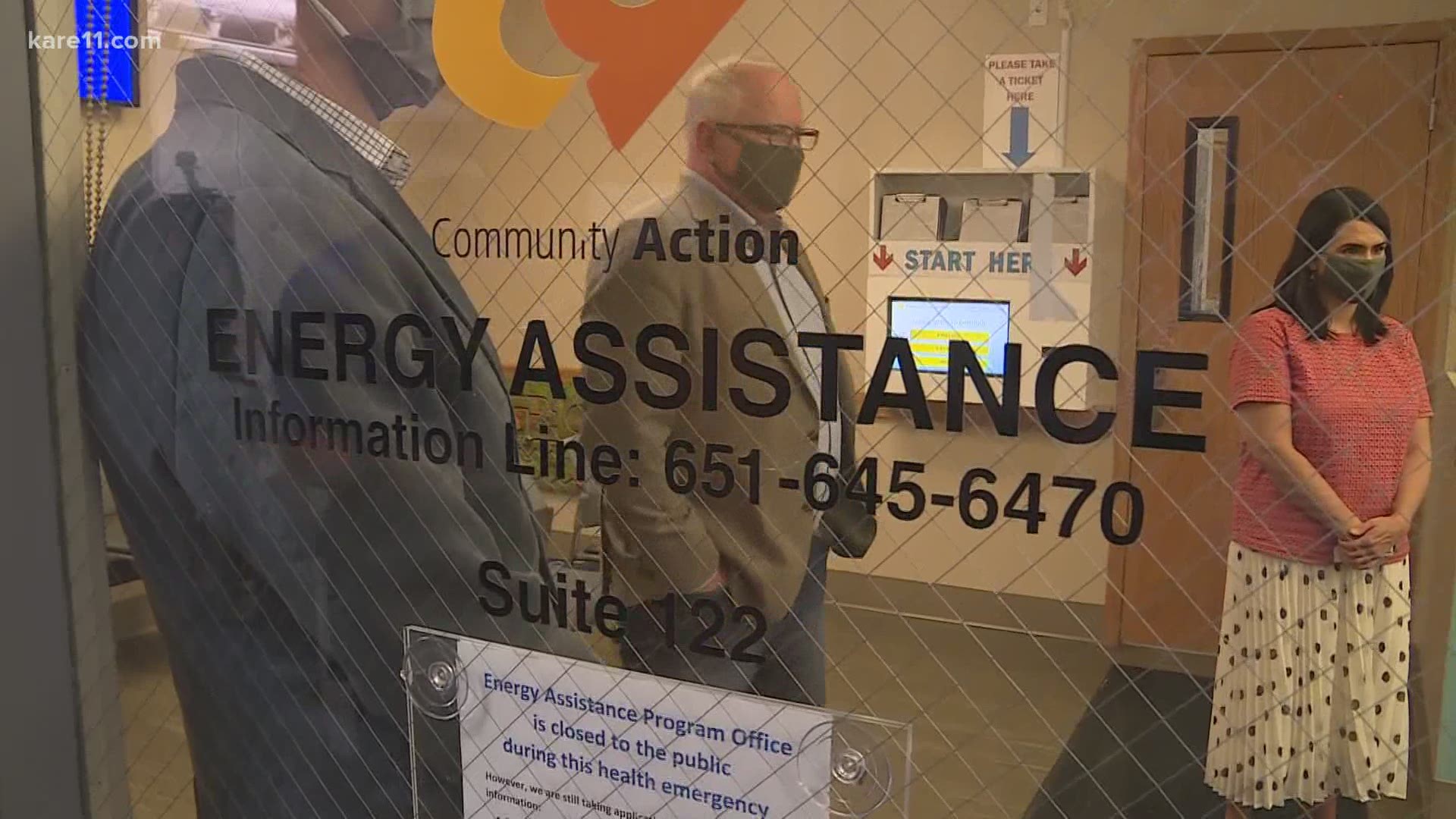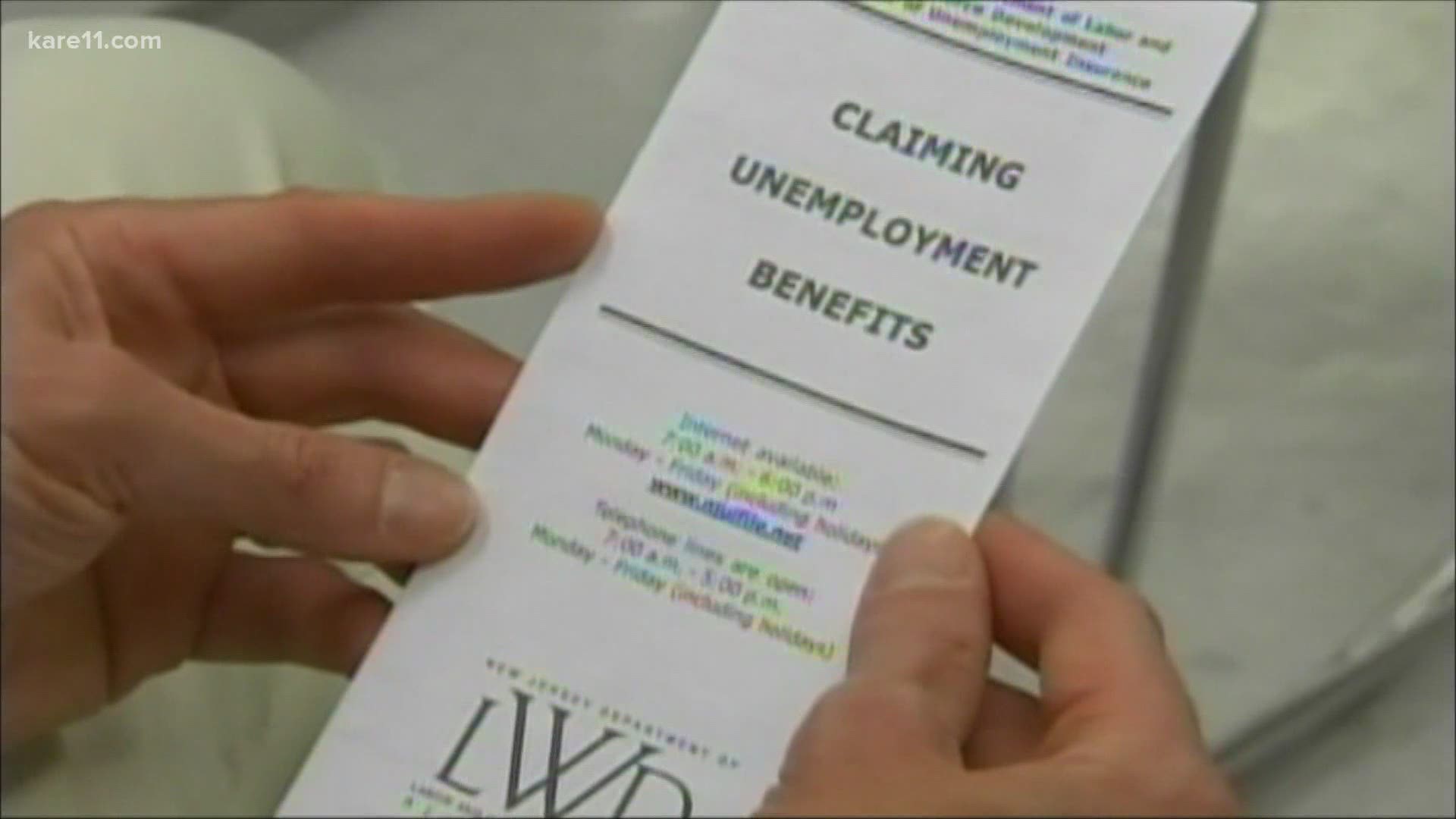Thursday morning, Gov. Tim Walz toured the Community Action Resource Center in St. Paul.
The center is just one of the many community groups that have been helping Minnesotans during the pandemic.
Organizations like these will have their work cut out for them now that the federal government's $600 weekly unemployment payment has gone away.
"We're not here to chastise the federal government we're here to ask them just to move on what everyone knows we need to do," Gov. Walz says.
While they wait for a decision from the feds, the governor and a group of state commissioners gave an update on the resources available here in Minnesota.
"We are doing everything we can to prevent more Minnesotans from becoming homeless," housing commissioner Jennifer Ho says.
Later this month the housing department will open an allotment of about $100 million that renters and homeowners can apply for to help pay the rent and the mortgage.
Commissioner Ho says the governor’s temporary halt on evictions and foreclosures is still in effect as well.
Homeowners may also qualify for forbearance on their mortgage payments for up to 360 days if their loan is backed by the federal government, or up to 90 days if the loan is not.
“Anyone who is interested should contact their lender to find out more about what might be available,” Commissioner Ho says.
This week, the Minnesota Department of Employment and Economic Development will also unveil its new “Jobs in Demand Campaign.”
The campaign will highlight a new job every week, along with a new industry that is still hiring during the pandemic.
"Even though the economy is in a challenging situation, there are thousands of employers across the state who are hiring and can't hire fast enough," DEED Commissioner Steve Grove says.
Those new programs and services are just a small sampling of the many resources that are available to Minnesotans who are struggling during the COVID crisis.
At the federal level, Republicans and Democrats in Congress both agree there should be a second round of stimulus payments.
The plan right now, from both parties, is to keep those payments at $1,200.
There is still some debate over which Americans should receive those payments.
Both sides also agree that this second round of stimulus payments should also include a $500 dependent credit.
However, the Republican plan will eliminate the age limit for that dependent credit.
During the first round of stimulus payments, parents only received that credit for children that are under the age of 17.
The Republican plan would give Americans a $500 credit for any dependent, regardless of their age.
While there is some agreement when it comes to this second round of stimulus payments, both sides are at odds when it comes to the $600 weekly unemployment benefit.
Democrats want to keep that same amount going.
Republicans want to shrink it to $200 a week, and also create a system that would ensure Americans are paid around 70-80% of their wages.
Republicans argue that the $600 weekly payments might dissuade some Americans from going back to work, because they’re making more money on unemployment.
Even though the $600 dollars from the federal government has stopped, unemployment payments from the state will keep going out.
DEED says Minnesota's pool of money officially ran out in July, but the state, and a dozen other states, are currently borrowing money from the federal government to keep those payments going.


